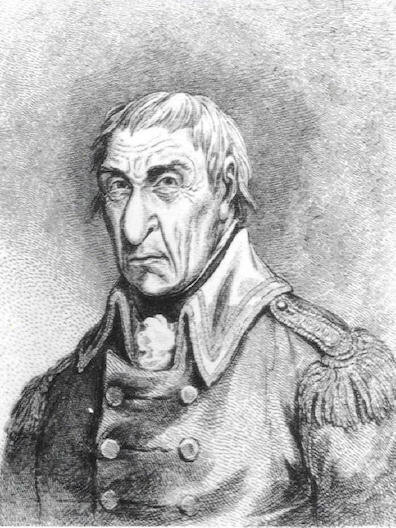Napper Tandy
Napper Tandy
In Brief
As Kevin Egan sings some of The boys of Kilkenny to Stephen, he takes his hand: "Weak wasting hand on mine." The touch, and the song's mention of exilic longing, make Stephen think of another song that contains both elements: "He takes me, Napper Tandy, by the hand." The allusion is to The Wearing of the Green, a street ballad commemorating the uprising of the 1790s.
Read More
General James Napper Tandy was one of the founders of the United Irishmen, a group of pan-denominational (but predominantly Protestant) activists centered in Dublin and Belfast, who were inspired by the French Revolution in 1789 and the publication of Thomas Paine's The Rights of Man in 1791. The group originally sought parliamentary reform of the existing political system but, confronted with British repression, it drifted toward republicanism, and in 1795 it made common cause with the secret Catholic agrarian organization called the Defenders. In the same year Tandy fled to the United States, and in 1798 he moved to Paris to join Theobald Wolfe Tone and others who were plotting an uprising assisted by a French invasion force. In September 1798 he captained a French corvette filled with troops and arms to Donegal, where he unsuccessfully sought to foment rebellion.
The song, which Gifford notes was "formalized" in the late 19th century by the Irish-American actor and writer Dion Boucicault, appears to present Tandy at some point during the three years of his exile. The second stanza of the ballad begins, "I met with Napper Tandy, and he took me by the hand, / And he said, 'How's dear old Ireland, and how does she stand?'" (In Circe Old Gummy Granny echoes the second of these lines: "You met with poor old Ireland and how does she stand?") The answer is that Ireland is faring very poorly: "She's the most distressful country that ever yet was seen; / They're hanging men and women there for wearing of the green." The United Irishmen had adopted green as their color, and citizens were wearing green ribbons or items of clothing (or sometimes, the song suggests, shamrocks) to demonstrate their support. The British authorities responded with typical brutality, declaring the wearing of green an act of sedition punishable by death.
Thornton notes that in the lecture titled "Ireland, Island of Saints and Sages," delivered in Trieste in 1907, Joyce mentions Tandy as one of the "heroes of the modern movement." Stephen's thoughts seem to cohere with that assessment. He imagines Kevin Egan, an insurrectionist living in exile in Paris, as an avatar of another insurrectionist living in Paris a century earlier. In this drama, Stephen plays the role of the visitor from Ireland whom Tandy asks for news of his native land. But of course Stephen too (like Joyce) thinks of himself as an exile determined to improve Ireland from abroad, so the gleam reflected from Tandy may burnish his aura as well.
